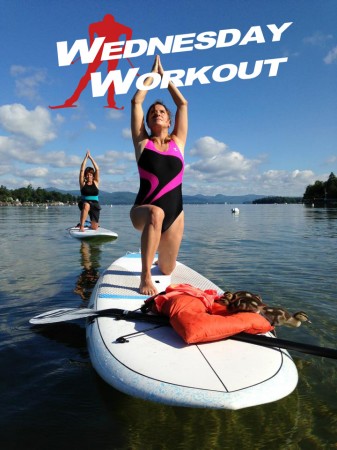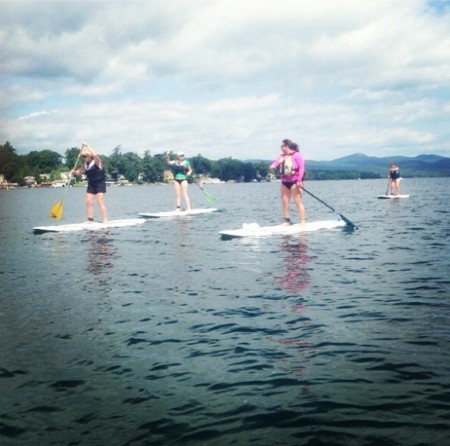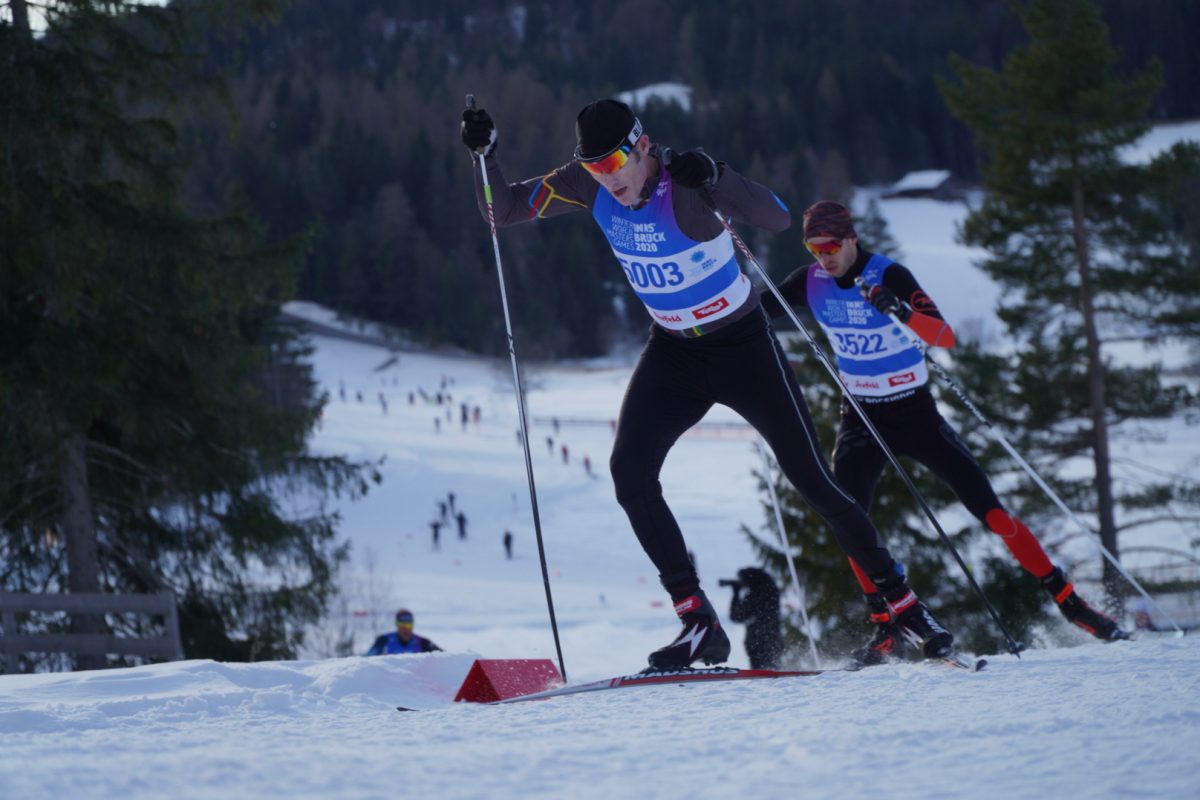
When it’s too hot to run, rollerski, hike, bike or even jog, seek water. Stand-up paddling (SUP) is one of the latest-and-greatest exercise activities to hit the water in recent years, and while it might look simple enough, there’s plenty to keep you busy if you want to do it right.
Why worry about technique? Because if you’re going to do it — and if you plan on paddling for long stretches at a time — you might as well do it efficiently. Muscling your way through it or paddling too leisurely with either injure or bore you, but finding the “sweet spot” in between will leave you feeling it in your abdominal area, as well as your upper and lower body.

Without reading on, you’ve already learned one of the keys to success in paddle boarding: finding the sweet spot. That’s the place on your board where you’ll find the most stability: each foot on either side of the handle (the handhold that helps you carry the board out of water).
Too far in front or back (tip and tail) of the board will leave you wobbly, although more advanced paddlers can take a surf stance near the tail to further develop leg strength and balance.
After you get your balance, it’s a matter of keeping it. Concentration is important, especially in windy, wavy, or variable conditions, but so is relaxing. Keep your head and chest up, lead with your arms, and stay loose with a slightly bent stance — checking that your feet are evenly spaced from the sides and center of the board, about shoulder-width apart.
If all this is easy, focus on your stroke: Catch, Pull, Relax (CPR). The first part of the stroke, the catch, should begin with the paddle entering the water 2 to 3 feet in front of your feet, angled part of the blade facing away, according to “Stand Up Paddling” by Rob Casey. Submerge the blade, then drag it straight back parallel to the board (without hitting it) and twisting your torso as you do so. That’s the power phase — the push.
Just as if you were thinking of “Toe-Knee-Nose” while practicing V1-skate technique, spend some time actually following your paddles movement back toward your feet — while keeping your lower body in a forward-facing fixed position.
When the blade passes your feet, pull it out of the water. Relax as you release. To return to start, twist your lower wrist forward to “feather” the blade and minimize wind resistance and maximize efficiency.
Repeat and switch sides as necessary to keep the board straight (or turn it), swinging the paddle shaft in front of your chest like a pendulum and trading out top and bottom hands to stroke on the other side.
According to Men’s Fitness, stand-up paddling is one of the top-five water activities for burning calories. Probably more important for skiers, it works on core strength and balance.
“SUP, as it’s affectionately known—is just as good as kayaking and more so because the lower body component comes into play more consistently,” the article states, explaining that it engages quadriceps, hamstrings, and glute muscles throughout.
Compared to swimming, waterskiing and kayaking, the calorie burn per 30 minutes is on the lower side if you’re doing it leisurely in flat water (with no wind), but it still compares to surfing at around 123 calories for a 180-pound person.
At race pace, the burn can soar up to 850 calories per hour for a 160-pound person. A fitness paddle (in calm water, light wind, but continuous high pace and elevated heart rate) clocks in around 500 calories per hour for the same person.
Add wind, choppy water and the added challenge of riding waves, and you could burn hundreds of more calories per hour, according a SUP fitness article on the Isle Surfboards blog.
“SUP builds endurance and balance, giving your entire body a complete cardio workout—in fact, some experts say that 30 minutes of SUP is equivalent to running six miles,” Men’s Fitness states.
Perfect Your Stand Up Paddling Technique (adopted from Seabreeze.com.au)
Hand position: If you hold the paddle above your head then your elbows should be at a 90-degree angle. If they’re too far either side of this then your paddling will be inefficient. Think about getting some tape and marking out where your bottom hand should be – at least till you get a feel for it.
Feet position: Think of your feet as the foundations for your arms and your paddle – weak foundations equal an unstable paddle technique. To get it right, your feet should be a shoulder width apart with one foot a couple of inches in front of the other to keep you stable front-to-back.
The technique:
You can break the paddle stroke down into distinct stages:1. The Catch. This is when you get your paddle in the water and before you begin pulling it back. Have your arms fully extended, and then aim to place your paddle about a foot beyond where the paddle would enter the water if you kept it in a vertical position. Get your paddle blade deep into the water before you begin pulling back.
2. The Stroke [or pull/power phase]. Focus on pulling yourself past the paddle, rather than pulling the paddle past you… Keep your bottom arm almost straight and twist your shoulders for good positioning and to ensure that you really get ‘over’ the paddle and put maximum power into your stroke. You should aim for a good clean stroke in one consistent motion.
3. The Return [release/relax]. When your blade gets level with your feet then it’s time to think about pulling it out of the water. By the time it’s completely out it should be no more than two feet behind your body. Aim to lift the blade out quickly and at an angle – so that you’re not lifting your arms up too high, but ‘swinging’ the blade away from you and out of the water. Once it’s clear of the water, turn your blade through 90-degrees, so that it’s got minimal wind resistance and bring it back up to the correct position for the start of The Catch.
Alex Kochon
Alex Kochon (alexkochon@gmail.com) is a former FasterSkier editor and roving reporter who never really lost touch with the nordic scene. A freelance writer, editor, and outdoor-loving mom of two, she lives in northeastern New York and enjoys adventuring in the Adirondacks. She shares her passion for sports and recreation as the co-founder of "Ride On! Mountain Bike Trail Guide" and a sales and content contributor at Curated.com. When she's not skiing or chasing her kids around, Alex assists authors as a production and marketing coordinator for iPub Global Connection.



